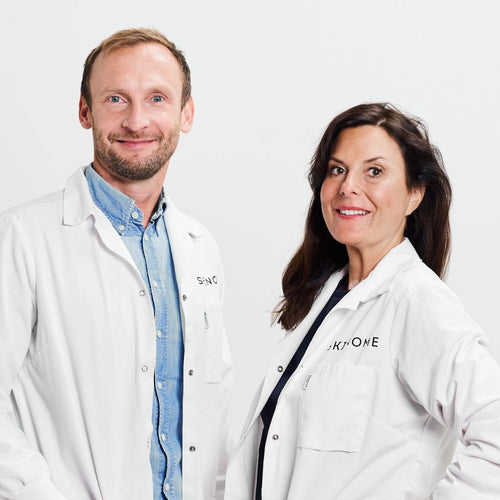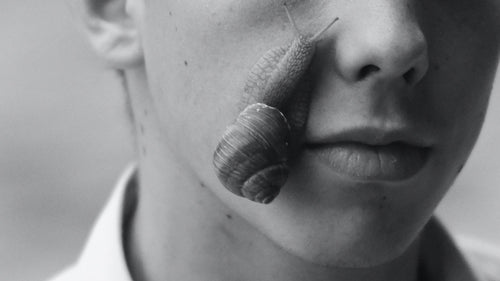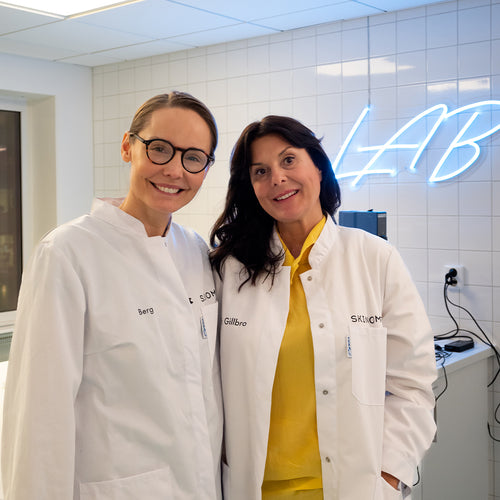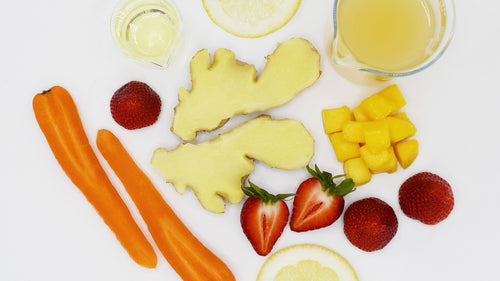Snigelslem i hudvård, vad är det?
Snigelslem har en historisk användning för behandling av olika typer av hudåkommor, framför allt för att bota, lindra eller motverka inflammation, irritation, infektioner och sårläkning. Det finns även rapporterat att det har använts i det antika Grekland för dess antiinflammatoriska och sårläkande effekter. I den moderna hudvården har det setts i mer och mer olika hudvårdsprodukter och det slem som vanligen används i kosmetiska produkter är ett som utsöndras när snigeln blir stressad eller skadad, men även snigelägg finns som ingrediens. Detta utsöndras för att skydda snigeln samt motverka och läka skador som uppkommer. Snigelslemmet kommer ofta från en art som heter Cryptomphalus Aspersa, även känd som fläckig vinbergssnäcka. Denna finns naturligt på ett fåtal platser i Sverige, men ingredienserna framställs inte i Sverige.
Snigelslem innehåller till större delen vatten, oftast mer än 90%, samt olika större molekyler som ger slemmet dess konsistens såsom glykosaminoglykaner, proteglykaner och glykoproteiner vilket är socker-baserade stora molekyler som binder fukt. Kollagen, elastin samt hyaluronsyra är andra stora molekyler som kan förekomma. Dessa ämnen är så pass stora att de inte tar sig igenom hudbarriären och de kan därför inte utöva en återfuktande och mjukgörande effekt annat än på ytan av huden. Mindre ämnen med rapporterad förekomst är allantoin, glykolsyra, samt olika antimikrobiella peptider och mineraler såsom zink, järn, koppar och mangan. Dessa ämnen skulle kunna ta sig igenom hudbarriären och utöva en effekt.
Fungerar snigelslem i hudvård?
Det finns vetenskaplig litteratur som visar på att snigelslem skulle kunna ha en effekt i huden, men få om ens någon kontrollerad studie där en effekt har visats efter användning av produkter på en normal oskadad hud.
De flesta vetenskapliga studier på snigelslem är s.k. mekanistiska studier där ingredienser från sniglar testats för olika hudvårdande egenskaper där syftet är att förstå effekten av enskilda extrakt eller ämnen i extrakten samt effekten i olika modeller. Det finns endast ett fåtal studier som är utförda genom randomiserade kliniska studier på människa, vilket innebär att studien gjorts enligt en högre vetenskaplig standard och med kontrollpreparat. I en av dessa studier har man studerat effekten av extrakt från snigelslem och snigelägg, men även tillsammans med andra aktiva ingredienser vilket gör det svårt att särskilja vilken effekt som kommer från vilken ingrediens och om effekten kommer från snigelextrakten som användes.
Det går därför inte att utesluta att den redovisade effekten kommer från något annat av de ingående aktiva ämnena.
Bra att veta är att det finns en risk för allergi med snigelslem, men det verkar inte vara vanligt. Men eftersom snigelslem är en blandning av många ämnen finns det en större risk att det kan ge problem i huden, särskilt om huden redan är påverkad eller känslig.
Sammanfattning
Efter en grundlig genomgång av tillgänglig litteratur framstår snigelslem som en så kallad "story ingredient",
d v s en ingrediens som framför allt tillsätts i produkten för att skapa en spännande berättelse och ge en känsla av innovation. Mekanistiska studier har påvisat potentiella positiva effekter av snigelextrakt på huden, och kanske framför allt om huden är skadad. Emellertid är det viktigt att notera bristen på studier som visar att dessa effekter verkligen kan realiseras när ämnet används i hudvårdsprodukter på normal hud.
Även om vissa mindre beståndsdelar i snigelslem, såsom allantoin, organiska syror och mineraler, har potential att passera hudbarriären och ge fördelaktiga effekter, är det troligtvis mer ändamålsenligt att använda dessa isolerade ämnen. Genom att använda rena ämnen minskas risken för biverkningar och andra potentiella problem.
För att ge en mer entydig bild av effekterna av snigelslem och för att förstå vilka specifika ämnen som potentiellt ger dessa fördelar, krävs ytterligare forskning. Det är även värdefullt att undersöka om användning av hela snigelslemmet ger några unika fördelar gentemot att använda enskilda isolerade ämnen. Det behövs alltså mer omfattande studier för att fastställa om snigelslem faktiskt är ett effektivt alternativ för hudvård och om det ger mervärde jämfört med att använda vissa av de ämnen som snigelslemmet innehåller. Vår syn är att det är bättre att använda vetenskapligt studerade och bevisade ingredienser både från ett hudhälsoperspektiv och ett miljöperspektiv, då slipper vi även ha snigelfarmar och slipper oroa oss för att djuren mår bra.














